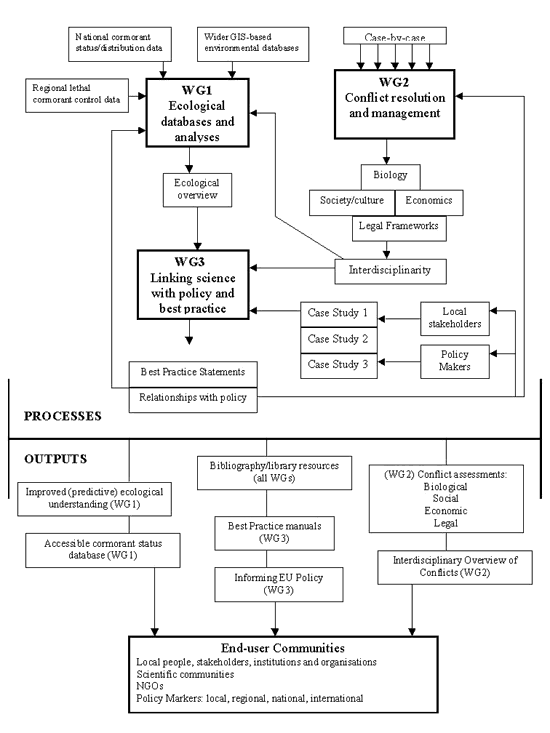The main objective of INTERCAFE was to improve European scientific knowledge of cormorant-fisheries interactions in the contexts of the interdisciplinary management of human:wildlife conflicts and of sound policy formation, so as to inform policy decisions at local to international levels across Europe and to deliver a coordinated information exchange system and improved communication between all stakeholders. Project participants, covering 28 countries in Europe and beyond, ultimately created a coordinated research network and an information bank that could be used to develop long-term collaborative management solutions to pan-European cormorant conflicts.
INTERCAFE was targeted towards the development of policy aimed at maintaining the favourable conservation status of Europe’s cormorant populations whilst enabling the sustainable exploitation of fish stocks in a wide variety of aquatic habitats. To achieve this goal, which requires considerable coordination and synthesis, three Working Groups were established. These Working Groups and their associated processed were integrated and designed to deliver a number of outputs.
